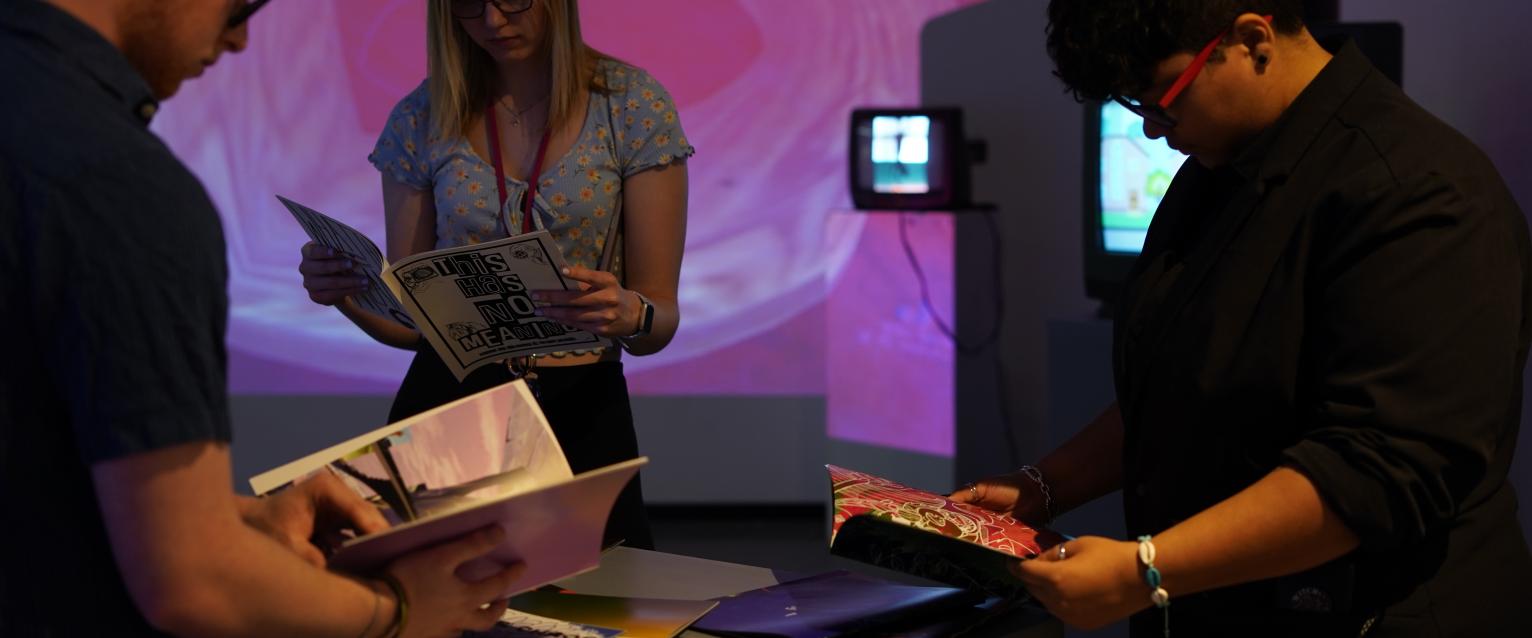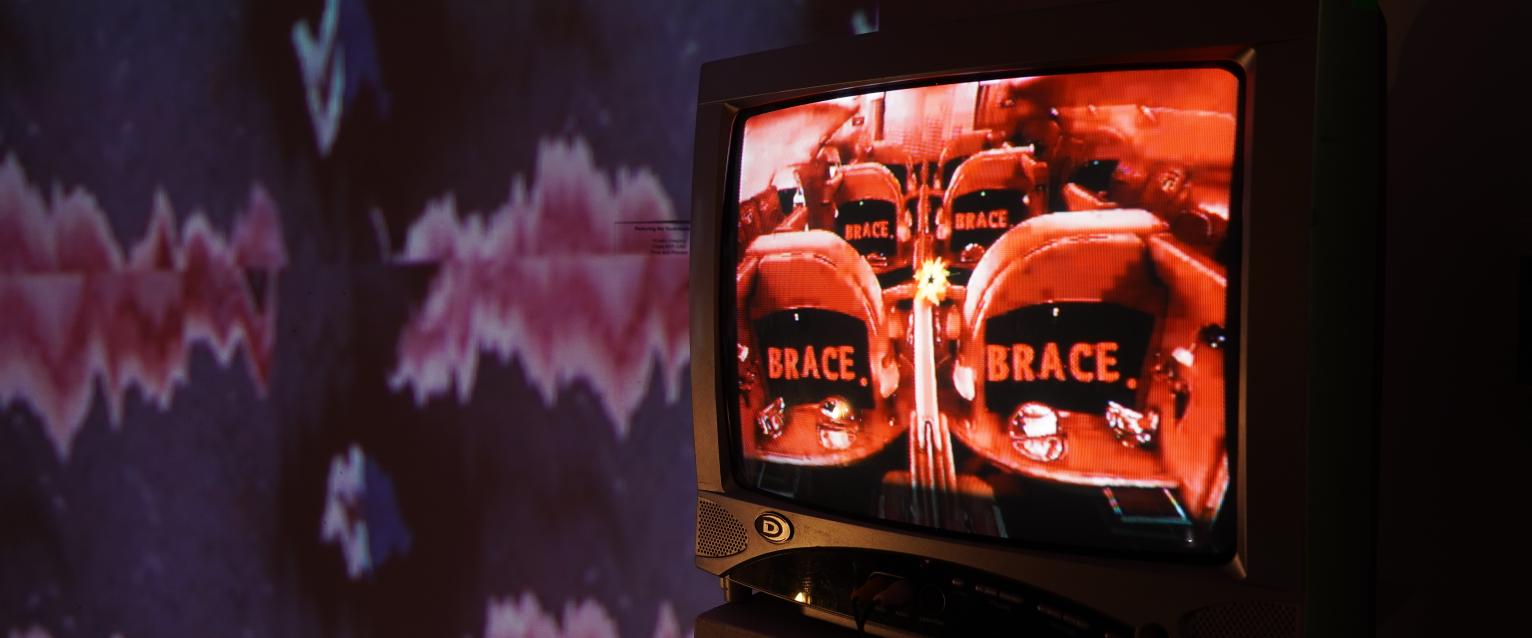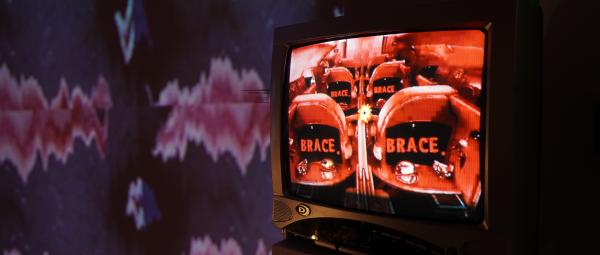B.S. in Kinetic Imaging with an Emphasis in Animation
Kinetic Imaging at Western Michigan University’s Gwen Frostic School of Art is a Bachelor of Science Degree with tracks in Animation, Game Art, and Video Art. The Kinetic Imaging core includes coursework in illustration, AR/VR, coding, 3D modeling, world building, sound art, installation, and performance art.
Episode 1 of Kinetic Imaging Student Work broadcast on Public Media Network.
Visiting artists
The mission of Frostic School of Art’s Visiting Artist program is tri-fold: to provide students direct, meaningful contact with working artists, both established and emerging; to elevate the regional, national, and international profile of the Frostic School of Art and Richmond Center for Visual Arts; and to nurture a sense of community among students, faculty and staff within WMU’s College of Fine Arts. Recent visiting artists and scholars that supported the kinetic imaging curriculum include: Justin Lincoln, Lev Manovich, Kika Nicolela, Laleh Mehran, Chris Coleman, Robin O'Neil, Paul Catanese, Naomi van Niekerk, Lynn Kim, Kristina Sheufelt, Calista Lyon, Jameel Paulin, Shohei Katayama, Evelin Stermitz, and Ash Arder.
Curriculum: Bachelor of Science in Kinetic Imaging
Basic Studies - 12 credits
- ART 1040 Object Drawing
- ART 1070 Form and Surface
- ART 1080 Form and Space
- ART 1090 Time and Process
Art History - 3 credits
Select at least one of the following
- ART 2200 Caves to Cathedrals
- ART 2210 Modern and Postmodern
- ART 2220 Art of Africa, Oceania, and the Americas
- ART 2230 Introduction to Asian Art History
Kinetic Imaging Core - 18 credits
- CFA 2000 Coding Lab (repeatable for credit)
- MUS 2240 Electronic Music Techniques
- ART 2290 Digital Video Concepts
- ART 2690 Illustration I
- ART 3780 Media and Culture
- CFA 4000 Experimental Lab (repeatable for credit)
- ART 4800 Topics in Kinetic Imaging (repeatable for credit)
Non-Digital Studio Art - 6 credits
Select at least two of the following
- ART 2160 Black and White Photography I
- ART 2300 Ceramics I
- ART 2310 Sculpture I
- ART 2380 Metals & Jewelry I
- ART 2400 Painting I
- ART 2800 Printmedia I
Kinetic Imaging Concentrations - 9 credits
Select at least one of the following:
Animation
- ART 2840 Animation I
- ART 3840 Animation II
- ART 3180 Topics in Animation (repeatable for credit)
OR
Game Art
- ART 2970 Game Art I
- ART 3970 Game Art II
- ART 3190 Topics in Game Art (repeatable for credit)
OR
Video Art
- ART 2750 Video Art I
- ART 3750 Video Art II
- ART 3170 Topics in Video Art (repeatable for credit)
Kinetic Imaging Capstone - 6 credits
- ART 4810 Projects in Kinetic Imaging I
- ART 4820 Projects in Kinetic Imaging II
Summary of Bachelor of Science in Kinetic Imaging
- Kinetic Imaging Major—54 credits
- Western Essential Studies —37 credits
- Electives —31 credits
- Total Credit Hours—122 credits
Students should consult the WMU catalog for the kinetic imaging program course descriptions and requirements.
Faculty









